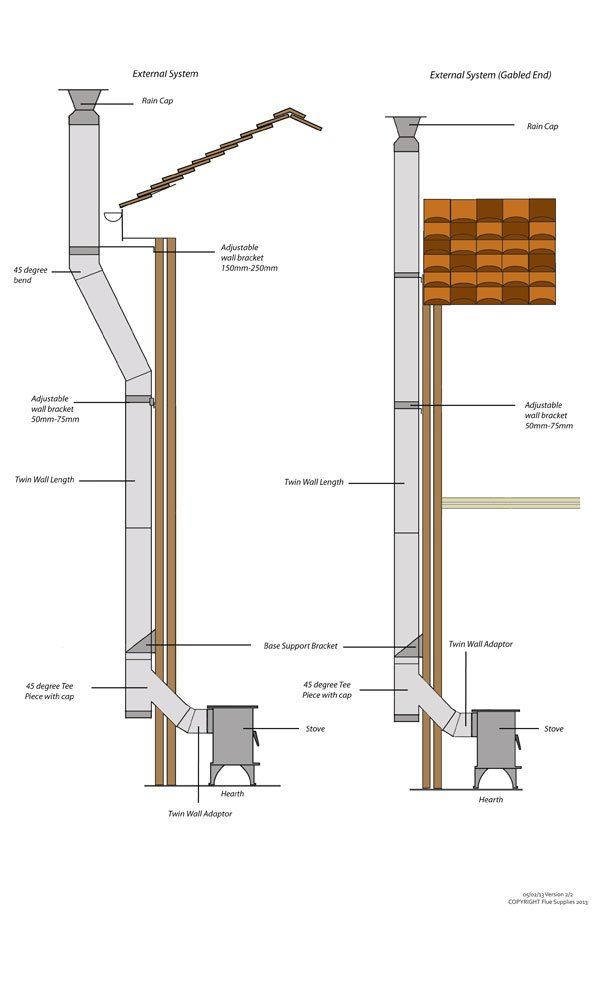Stove with Chimney ‘Pipe’ Smoking Back? Here’s 5 Common Reasons Why…
June 21, 2020
Stove with Chimney ‘Pipe’ Smoking Back? Here’s 5 Common Reasons Why…
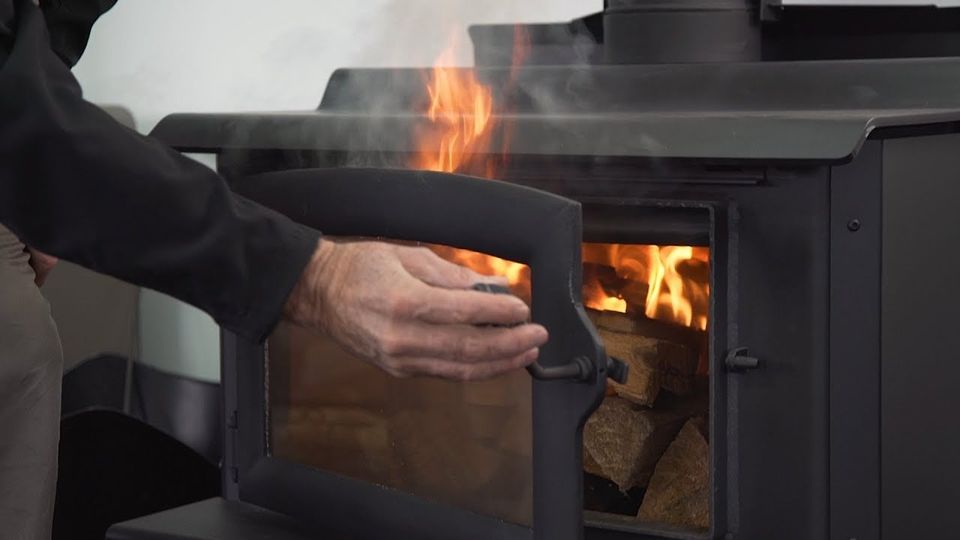
You can have a chimney pretty much anywhere these days thanks to twin wall insulated systems.
These factory-made flues negate the need to build an expensive, brick chimney and are quicker to install.
However, they aren’t without their issues if they’re not operated or installed correctly.
Here’s the 5 most common issues
#1 – Cold Flue Syndrome
This usually happens when the flue goes through the wall and up the gable end of the property. The reason is pretty simple; despite being insulated they can, by virtue of their position on an exterior wall, get pretty cold. So they can struggle to ‘draw’.
The best way to counteract this is to warm the flue for a few minutes before starting a fire.
This could be with a small camping stove, a heat gun or maybe even a few firelighters (although these can create the smoking back you’re wanting to avoid).
Once warmed for a few minutes, I would then advise using the ‘top down’ burning method to, again, help warm the flue further but also ensure you create the minimum amount of smoke.
#2 – The Flue Isn’t Tall Enough
For any chimney to work, the flue terminal needs to be a certain height. That height all depends whereabouts it is in your property.
Building regulations have very specific guidance on how far terminals should be from opening windows, adjacent structures and the weather surface of your roof.
Unfortunately I see very many twin wall systems which aren’t tall enough.
This is mostly to do with fitters who don’t want to add scaffolding or additional supports onto the final bill, so they terminate it too short – usually below the apex of the roof.
When this happens it can affect the performance of the installation.
#3 – Too Many Bends
Similar to the previous point, Building Regulations have set parameters for flue design and yet I see some very unusual set ups.
A common issue can be excessively long horizontal runs from the back of a stove followed by a 90 degree bend upwards towards the remainder of the flue.
Other designs may have an excessive amount of bends in the flue, causing the chimney not to function properly.
Ideally, you would want a pipe coming off the top of your stove and then having no more than four 45 degree bends before the terminal.
If the pipe is coming off the back off the stove, there are certain rules and calculations needed, depending on the length, in order to prove it works, and that the manufacturer has given consent.
While this may all sound a bit technical, the net result could be, again, that the flue smokes back. So it pays to ensure it’s to regulations.
#4 – Lack of Ventilation In the Room
Because twin wall systems are more common in newer properties (or extended parts of older properties), ventilation can be an issue.
The science is quite simple; stoves need air in order to ‘work’. The newer the home, more likely it is to be ‘airtight’.
Better wall and roof insulation, modern double glazing, extractor fans… they all have the ability to cause issues for a stove.
It’s worth pointing out here that any home with a solid fuel appliance built after 2008 must, under building regulations, have an additional air supply. This is to ensure the stove works properly.
#5 – Design of Stove
Because of a lack of chimney breast, many people want, or are to choose, larger stoves to compensate for this.
These stoves tend to have very large doors and, when refuelling, they can ‘spill’ smoke into the room.
Smoke will generally follow the path of least resistance, so when you open the door, it may – if the pull outwards into the room is bigger than the pull upwards into the flue – cause smoking back.
My advice is to crank open the door to a larger stove slowly, and when refuelling only do so by opening the door a quarter of the way.
That way, you’re not giving the smoke as much chance to escape and keeping the draught in the stove and flue more evenly balanced.
Finally…
When done correctly, twin wall insulated systems can be fantastic and give many years of happiness. Done incorrectly and it can turn into a thoroughly miserable experience.
If you’re having problems with your own twin wall insulated chimney, you’d be wise to contact your local, professional chimney sweep.
As people who see stoves and flue systems regularly, we can usually pinpoint these issues fairly quickly.
And of course we can provide you with the advice and guidance you need to help remedy the situation as soon as possible.
For a professional Chimney Sweep with years of experience, call Clean Sweep Chimney Services on 07907086764, or email us on cleansweep999@gmail.com to book your flue service.
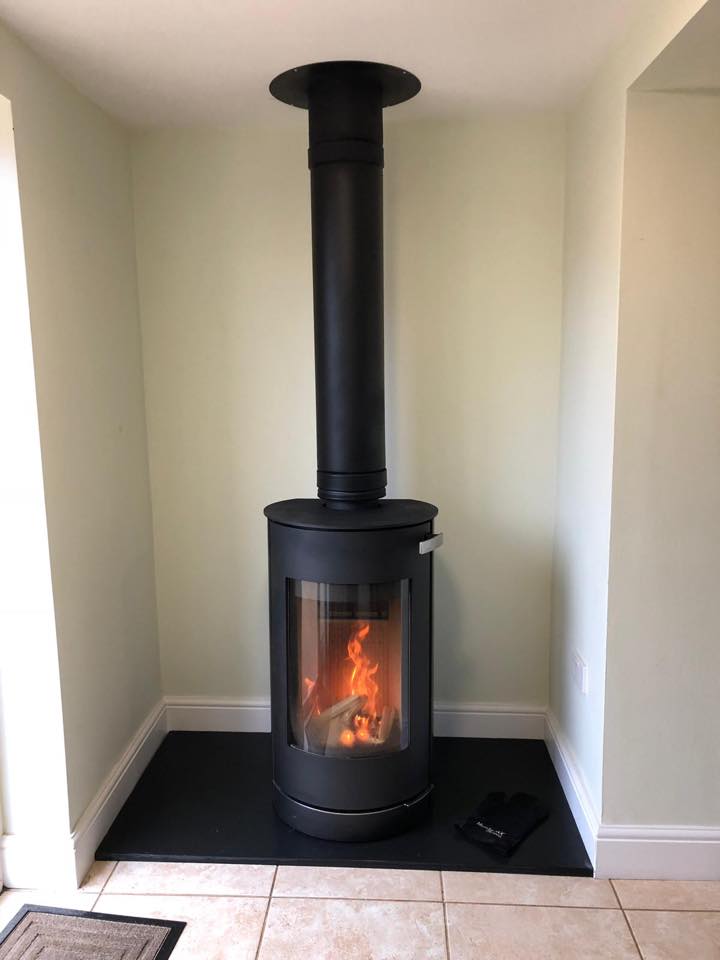
So here we go again. Another lockdown. Back to where we were in March. Well, not exactly. There are some quite big differences, and they’re actually good news for sweeps, stove fitters and their customers. Because unlike in March, when the government’s advice was much misunderstood – prompting many sweeps and installers to down tools – they have been more forthright this time. They have now spelt out, in black and white, that people ARE able to work in other people’s homes. Crystal clear. End of.
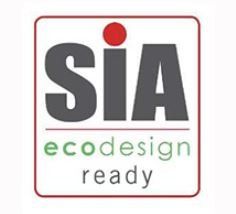
SIA Ecodesign Ready Scheme is a new scheme to increase environmental benefits of wood burning stoves. Air Quality is extremley important and Eco Design Ready Stoves reduce emissions by 90% Ecodesign is a European programme to lower emissions and the new regulation will come into force in the UK in 2022. The Ecodesign Ready scheme is supported by DEFRA. The SIA Ecodesign Ready label will set the standard for the most environmentally friendly stoves available today. For more information you can visit Stove Industry Alliance
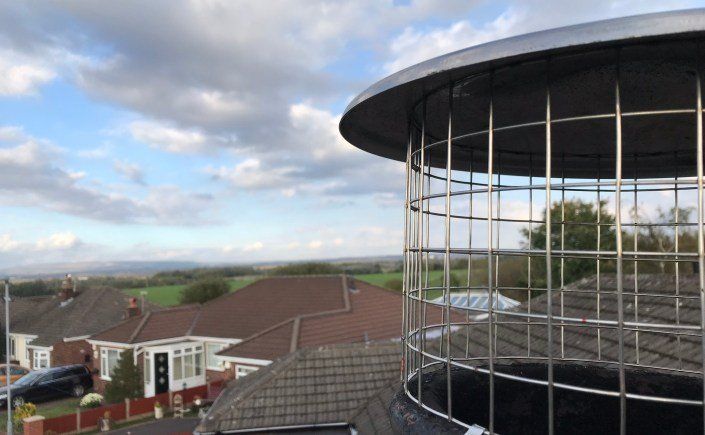
There’s nothing more frustrating than not being able to use a fireplace when you want. But imagine having to go without it from winter until the following autumn. That’s the position you could find yourself in if birds decide to nest in your chimney. Historically, the nesting season in the UK usually starts around March time. However, over recent years, jackdaws and starlings have started nesting much earlier – sometimes as early as January. They’re also getting more territorial, often returning to the same location year after year. And once they start building a nest, it is protected by law. Under the Wildlife & Countryside Act 1981, it is an offence to destroy an active bird’s nest without good reason. Simply wanting to use your fire isn’t a good enough reason, and any professional sweep will not break the law. The truth is, that if your chimney isn’t properly protected and you get caught out, then you simply have to be patient.
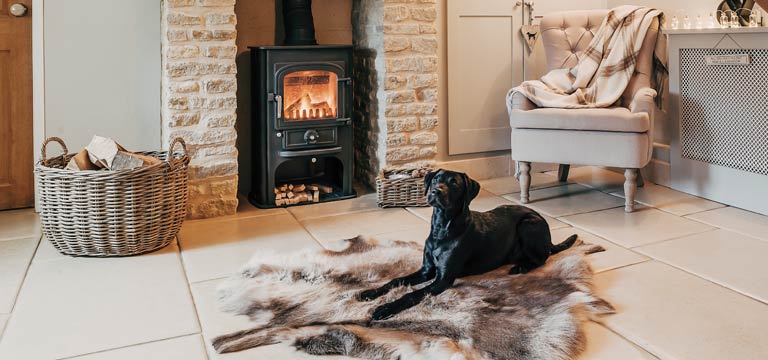
Fireplaces have many functions, from being pieces of history to a simple ‘nice to have’ accessory. But at certain times, they can also prove to be a lifeline. During a power cut, fireplaces can provide a main source of heating. It gives a sense of security as an independent heat source. And for people who are on their own for long periods of time, it can be almost like a companion. Stove and fireplace usage could rise above normal levels over the next few months, given world events. But is your appliance ready to rise to the challenge? The key to having a consistent and effective supply of heat from your fireplace depends on one person – you. Here’s 5 ways YOU can ensure your appliance is in the best shape possible. Book A Chimney Sweep NOW
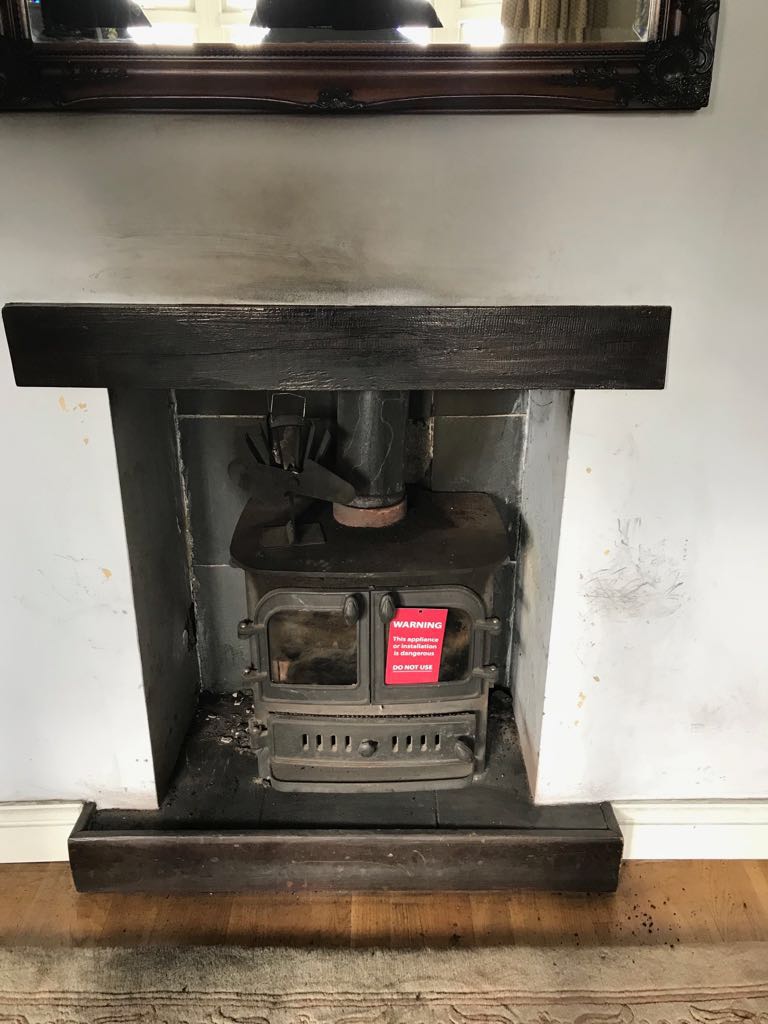
DIY is set to skyrocket in the next few months as more people spend time at home. But there’s some jobs you really should leave to the experts. Among them are fitting your own solid fuel woodburner/open fire or sweeping your chimney. Why? Well put simply they both are highly skilled trades which take years to master.
